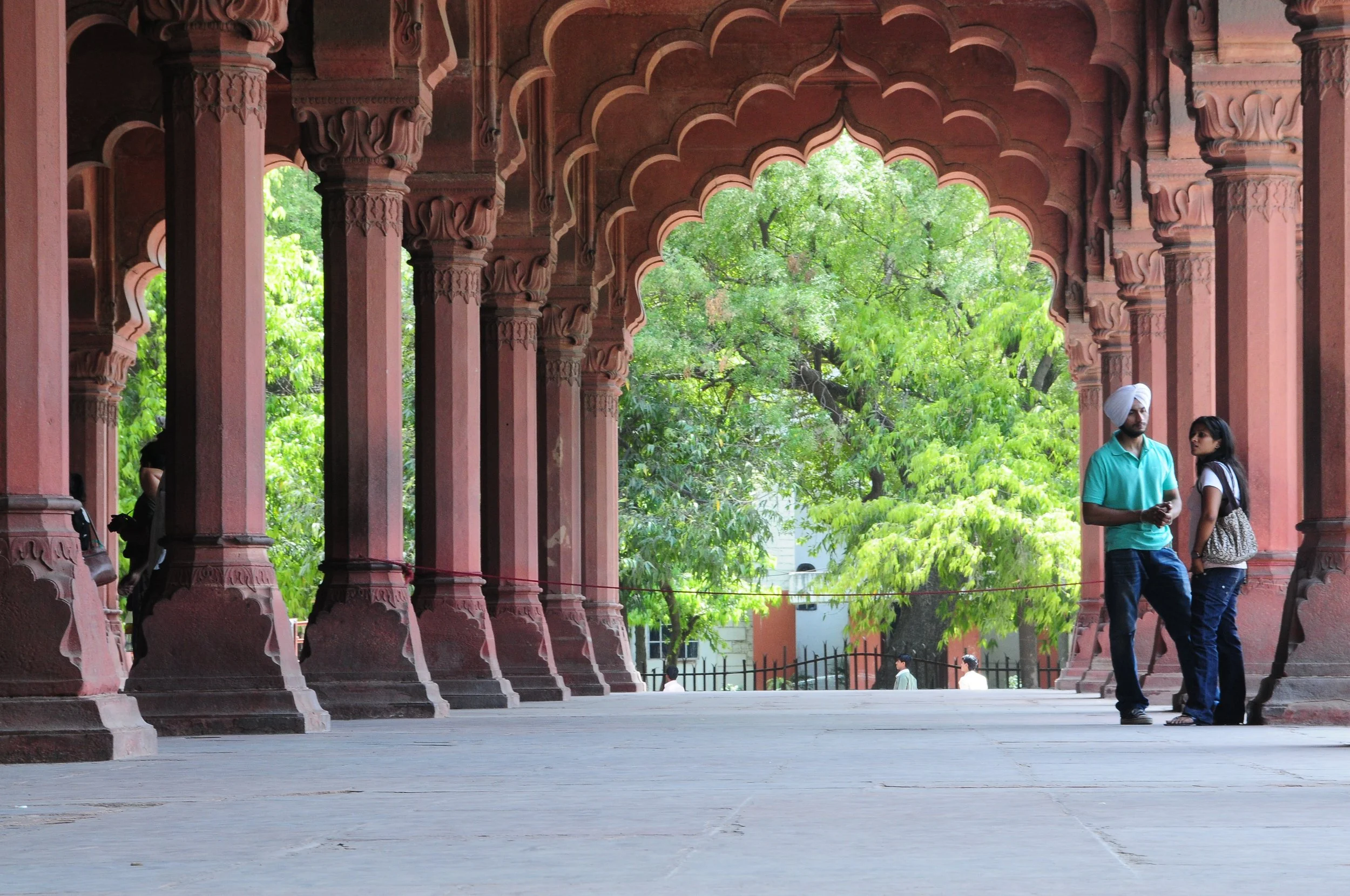
North India
Cultural & historic tours
A potted history of North India
Embarking on a cultural tour of North India offers an intriguing expedition into the region's abundant heritage, history, and diverse cultural tapestry. The historical narrative of North India unfolds from ancient times, showcasing early civilizations along the Indus Valley. Significant kingdoms and empires, including the Maurya and Gupta Empires, have left an indelible mark on the region's history.
During the medieval period, Delhi gained prominence as the capital of the 13th-century Delhi Sultanate, marking the onset of Muslim rule in North India. The Mughal Empire, initiated by Babur in the 16th century, ushered in a period of cultural and architectural enlightenment, giving rise to iconic structures like the Taj Mahal and Red Fort.
However, every empire has its sunset. In 1858, the Mughal Empire officially concluded, its decline being a gradual process influenced by internal conflicts, external invasions, and the ascendancy of regional powers. The British East India Company strategically gained control over North India, eventually culminating in the Indian Rebellion of 1857, prompting the British government to assume direct governance through the Government of India Act 1858.
This marked the transition from the East India Company's rule to the British Crown's dominion, a pivotal moment known as the beginning of the British Raj. The relationship with India’s people had positive and negative effects. On the one hand railways and institutions were built, and on the other, the food shortages imposed by the Raj during WW2 created famines that killed 3 million Indians.
After a struggle, India achieved independence in 1947, undergoing the tragic partition that resulted in the creation of India and Pakistan. Under Jawaharlal Nehru's leadership, India experienced a period of socialism and alignment with the Soviet Union. This persisted until the late 1990s when capitalism, rapid urbanization, and development emerged as the new political imperatives.
Today, Delhi and North India bear witness to a rich historical legacy, blending ancient heritage with modern development. The cultural diversity and historical significance render this region an enthralling destination for both travellers and historians.
Suggested North India Short Tour Itinerary
This itinerary provides a glimpse into the rich cultural tapestry of North India, offering a mix of historical monuments, vibrant markets, and traditional architecture. Adjustments can be made based on your preferences and the time available.
Day 1: Delhi
Arrive in Delhi, the capital city of India. Check-in to your hotel and freshen up.
Visit the Red Fort (Lal Quila), a UNESCO World Heritage Site and a symbol of India's rich history.
Explore the bustling market of Chandni Chowk, known for its vibrant street life and traditional bazaars.
Overnight stay in Delhi.
Day 2: Delhi
Today you visit India Gate, a war memorial and an iconic landmark surrounded by the historic buildings of the British Raj Government.
Explore Humayun's Tomb, and then go on to the Qutub Minar. This is the tallest brick minaret in the world.
Overnight stay in Delhi.
Day 3: Delhi to Agra (Taj Mahal)
This morning you’ll drive to Agra (about 3 hours by road). Once there you’ll visit the world-famous Taj Mahal. This, the greatest love story in the world, need no explanation.
After lunch you will visit the impressive Agra fort.
Overnight stay in Agra.
Day 4: Agra to Jaipur (via Fatehpur Sikri)
Drive to Jaipur (about 4-5 hours by road).
En route, you will visit the abandoned city of Fatehpur Sikri, after lunch you’ll continue to Jaipur and check-in to your hotel.
That evening you’ll relax after your journey.
Overnight stay in Jaipur.
Day 5: Jaipur
Wake up this morning in this majestic city. You’ll visit the Amber Fort by jeep. This is an architectural marvel with stunning views.
After that you should visit the City Palace, which houses museums and courtyard and end with the Hawa Mahal (Palace of Winds).
Overnight stay in Jaipur.
Day 6: Jaipur
On your last day, you will visit the Jantar Mantar, an ancient astronomical observatory.
This afternoon you will visit the vibrant markets of Jaipur before another relaxing evening.
Overnight stay in Jaipur.
Day 7: Departure
This morning you’ll be transferred to Jaipur or Delhi International Airport for your flight home, or to the next section of your India safari!
Jaipur 5 fun facts
The Pink City:
Jaipur is often referred to as the "Pink City" because of the distinctive terracotta pink colour that adorns most of its buildings. This colour scheme was implemented in 1876 to welcome the Prince of Wales, and it has since become a trademark of the city.
Hawa Mahal - Palace of Winds:
The Hawa Mahal, an iconic structure in Jaipur, is known as the Palace of Winds. Built in 1799, it has 953 small windows or "Jharokhas" that were designed to allow royal ladies to observe everyday life and festivals without being seen.
Jantar Mantar - Astronomical Observatory:
Jaipur is home to one of the world's largest stone sundials, located in the Jantar Mantar observatory. Built by Maharaja Jai Singh II in the 18th century, this UNESCO World Heritage Site consists of various architectural and astronomical instruments.
Amer Fort's Sheesh Mahal:
The Amer Fort, located just outside Jaipur, houses the Sheesh Mahal or the Hall of Mirrors. The Sheesh Mahal is adorned with intricate mirror work that was designed to reflect candlelight and create a starry effect, making it a dazzling and unique architectural marvel.
Elephant Festival:
Jaipur hosts the Elephant Festival annually during the Holi festival. This event showcases beautifully decorated elephants, cultural performances, and a lively procession. The festival attracts both locals and tourists, providing a colourful and vibrant celebration in the city.
Lesser known sights in Agra
Agra's Step Wells:
Agra is home to several ancient step wells, which were traditional water storage structures. While not as famous as some step wells in other parts of India, these structures showcase the historical water management systems in the region.
Mankameshwar Temple - Hidden Gem:
Amidst the bustling streets of Agra lies the Mankameshwar Temple, dedicated to Lord Shiva. This temple, less frequented by tourists, offers a tranquil escape and is considered one of the oldest temples in the city.
Agra's Wildlife SOS Elephant Conservation and Care Center:
Agra is home to the Wildlife SOS Elephant Conservation and Care Center, which focuses on rescuing and rehabilitating elephants. Visitors can learn about the organization's efforts to provide a better life for elephants that have been rescued from difficult circumstances.
Agra's Little Taj Mahal - Itimad-ud-Daulah:
Often overshadowed by the grandeur of the Taj Mahal, Itimad-ud-Daulah, also known as the "Baby Taj," is a beautiful marble mausoleum in Agra. It predates the Taj Mahal and is sometimes considered as an inspiration for the larger monument.
Khwabgah - Shah Jahan's Private Sleeping Quarters:
Inside the Agra Fort, there is a private space known as "Khwabgah," which means "House of Dreams." This area served as Emperor Shah Jahan's private sleeping quarters, reflecting the opulent lifestyle of the Mughal rulers.






